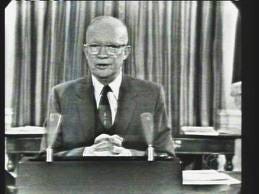Thinking About Coverage of China and the Second Cold War
Three key lessons for the press to learn from coverage of the U.S.-Soviet contest.
Welcome to Second Rough Draft, a newsletter about journalism in our time, how it (especially its business) is evolving, and the challenges it faces.
Ours is a time of momentous news stories, being reported as such—a global pandemic, a genuine domestic struggle over whether to preserve democracy, the greatest American racial reckoning in a half century, an accelerating debate on economic inequality, growing awareness of the increasing consequences of climate change. But on one critical story, I worry that the press is too often missing the larger picture: the heightening worldwide contest between the United States and China.
Realistically, if we are lucky, we are in the early phases of a second global Cold War; if we are not lucky, we are sliding toward the most significant world military conflict in more than three quarters of a century. My own view is that the Cold War scenario is the more likely one, but even if that is correct, it’s important to ask if the press is approaching such a struggle having learned the appropriate lessons from the first Cold War, between the U.S. and the Soviet Union during the period 1946-91. I fear that too often it is not.
What are those lessons? Three seem to me especially apt:
Don’t devote so much attention to tactics, and especially to the consequences for our own domestic politics, that you lose sight of strategic issues.
A lot of stories are being written, and more will be, about particular trade disputes and cyberattacks and technology transfers and human rights complaints. That is as it should be, although such stories tend far too often to view matters through the lens of our own domestic politics of the moment.
The larger picture needs also to be kept in view: how, under a president who has effectively installed himself for life, China has systematically betrayed a treaty commitment and ended democracy in Hong Kong more than 25 years ahead of the treaty’s pledge, how it is engaged in something very close to genocide against an ethnic minority, how it is increasingly threatening a military conclusion to the half century standoff over Taiwan.
The question is whether China is more than a new global power emerging into a mature role on the world stage, whether its behavior is more reminiscent of the U.S. itself in and after the 1890’s or, instead, Germany in the 1930’s or the Soviets in the 1940’s and 1950’s.
Be more sophisticated about what is happening inside our adversary’s society.
One critical lesson of the first Cold War is how very poorly we (journalists as well as officials) fared in understanding what was happening inside the Soviet Union, how little we actually knew, and yet how much we directed our own actions to address situations we thought we perceived, frequently, as it turns out, inaccurately. “Kremlinology” was once thought almost a science; today it is a sort of ironic epithet.
As things eventuated, there was, as Marx might have said, an internal contradiction in Soviet society, between the enormous ambitions of the state and its stultifying insistence on control. The Chinese well understand this, and have adapted their own system accordingly. One great question is whether their new amalgam of economic freedom and political dictatorship contains its own ultimately fatal contradiction or not. This is a question we cannot probe too often or too deeply.
Beware the big differences between this time and last time.
Of course, the second Cold War will no more recapitulate the struggle with the Soviets than the Second World War did the First.
In our own society, we need to acknowledge that this contest bears the additional freight of the fact that the Chinese people are more than 90% Han Chinese, while the total Asian population in the U.S. is less than 6%. And our record on treating these fellow citizens with respect and dignity is not a good one. Most Americans almost surely do not know of the horrors of the Chinese Exclusion Act, while many Chinese do. In the U.S., we need to grapple with this past—and the shortcomings of our present—even as we face the new Cold War challenges.
At the same time, we cannot afford to let appropriate shame about our own enduring legacy of race discrimination blind us to recognition of Chinese government misbehavior today—as it may have in initially considering the possibility of a lab leak triggering the pandemic.
Just as China is not the Soviet Union, so our contest with it will have different dynamics. Importantly, for instance, in the first Cold War, big business frequently considered itself invested in the confrontation. That is why General Eisenhower’s farewell warned of “the acquisition of unwarranted influence… by the military-industrial complex.” Today, by contrast, many U.S.-based corporations and their leaders may see their economic futures tied more tightly to a Chinese market that will exceed our own in size during this decade. This is a subject on which we could use more journalism.
Finally is the question of whether this struggle culminates on an international battlefield or otherwise. During the first Cold War, it was generally assumed that it likely would, and then it did not. In our own time, it is widely believed that the end game, however tense and difficult, will be peaceful. As I said, I tend to believe that myself. But it was unwise to assume conclusions in 1948 and 1962 and 1982, and the possibility of armed conflict should be a concern we consider openly today and in the years to come.




